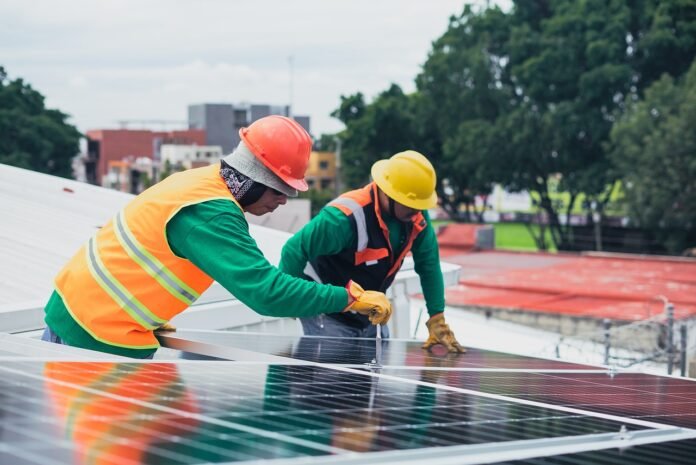The cleantech sector represents one of the most promising opportunities for entrepreneurs looking to build profitable businesses while addressing critical environmental challenges. With growing government support, increasing investor interest, and rising consumer awareness about sustainability, now is an ideal time to launch a cleantech startup.
Starting a cleantech venture requires a unique blend of technological innovation, market understanding, and regulatory navigation. This comprehensive guide will walk you through the essential steps to transform your sustainable technology idea into a thriving business.
Understanding the Cleantech Landscape
Cleantech encompasses a broad range of technologies and services designed to improve environmental performance while reducing costs and resource consumption. This includes renewable energy systems, energy efficiency solutions, waste management technologies, water treatment systems, sustainable transportation, and green building materials.
The sector offers diverse opportunities, from manufacturing solar panels and developing energy management software to providing consulting services for sustainable operations. The key is identifying where your expertise, market needs, and technological capabilities intersect.
Step 1: Conduct Comprehensive Market Research
Before diving into product development, invest significant time in understanding your target market. This research phase will inform every subsequent decision and significantly increase your chances of success.
Analyze Market Demand Start by examining the specific environmental challenges your target market faces. Are you focusing on urban energy efficiency, rural electrification, industrial waste reduction, or agricultural sustainability? Each segment has distinct needs, purchasing patterns, and decision-making processes.
Study demographic trends, economic conditions, and environmental policies that might drive demand for your solution. Look for underserved markets where existing solutions are inadequate, expensive, or inaccessible.
Identify Your Target Segments Cleantech markets often span multiple customer segments with varying needs and budgets. Urban commercial buildings have different requirements than rural households or industrial facilities. Segment your market based on factors like:
- Geographic location (urban vs. rural)
- Customer size (residential, small business, enterprise)
- Industry vertical (manufacturing, agriculture, healthcare)
- Economic capacity and willingness to pay
- Regulatory environment and compliance requirements
Study the Competition Map out existing competitors, their strengths, weaknesses, pricing strategies, and market positioning. Don’t just look at direct competitors; consider alternative solutions customers might choose instead of your product. Understanding competitive dynamics will help you identify opportunities for differentiation and market positioning.
Step 2: Develop and Validate Your Business Model
A strong business model is crucial for cleantech success, as these ventures often require significant capital investment and have longer development cycles than typical tech startups.
Choose Your Business Model Cleantech businesses can operate under various models:
- Manufacturing: Producing hardware like solar panels, batteries, or energy-efficient appliances
- Service-Based: Providing installation, maintenance, consulting, or project development services
- Technology Platform: Developing software for energy management, environmental monitoring, or sustainability analytics
- Project Development: Creating and operating renewable energy projects or environmental remediation systems
- Hybrid Models: Combining hardware, software, and services for comprehensive solutions
Validate Through Pilot Projects Given the technical complexity and regulatory requirements in cleantech, validation is critical. Develop proof-of-concept projects that demonstrate your solution’s effectiveness, cost-efficiency, and market viability. These pilots serve multiple purposes:
- Technical validation of your solution
- Market feedback and user experience insights
- Case studies for future sales and fundraising
- Regulatory compliance testing
- Cost and scalability analysis
Start small and focused. A successful pilot with measurable results is more valuable than ambitious projections without real-world validation.
Step 3: Navigate Legal and Regulatory Requirements
Cleantech ventures often operate in heavily regulated environments, making legal compliance essential from day one.
Business Registration and Structure Choose an appropriate business structure considering factors like liability protection, tax implications, and future fundraising plans. Limited Liability Partnerships (LLPs) and Private Limited Companies are popular choices for startups planning to raise external capital.
Industry-Specific Licenses and Permits Cleantech businesses typically require multiple licenses and permits:
- Environmental clearances for manufacturing or waste processing
- Grid connectivity permits for renewable energy projects
- Pollution control board approvals
- Industry-specific certifications and standards compliance
- Import/export licenses for equipment and technology
Regulatory Alignment Engage with relevant regulatory bodies early in your planning process. This includes national agencies, state electricity boards, local pollution control authorities, and industry associations. Understanding current regulations and upcoming policy changes will help you design compliant solutions and anticipate market opportunities.
Step 4: Secure Funding and Build Strategic Partnerships
Cleantech ventures often require substantial capital for research, development, equipment, and market entry. Developing a comprehensive funding strategy is essential.
Explore Diverse Funding Sources
- Government Grants: Many countries offer specific grants and incentives for cleantech innovation
- Venture Capital: Specialized cleantech VCs understand sector dynamics and can provide valuable expertise
- Strategic Investors: Corporations in related industries may invest for strategic reasons
- Development Finance: International development banks and impact investors focus on sustainable solutions
- Crowdfunding: For consumer-focused products, crowdfunding can provide both capital and market validation
Leverage Accelerators and Incubators Cleantech accelerators provide more than just funding. They offer:
- Industry expertise and mentorship
- Access to testing facilities and laboratories
- Connections with potential customers and partners
- Regulatory guidance and compliance support
- Market entry strategies and business development
Build Strategic Partnerships Partnerships can accelerate growth while reducing costs and risks:
- Technology Partners: Collaborate with research institutions or technology providers
- Distribution Partners: Leverage existing sales channels and customer relationships
- Implementation Partners: Work with installers, contractors, or system integrators
- Government Partnerships: Engage with public sector programs and initiatives
Step 5: Build Your Technical Capabilities and Team
Success in cleantech requires both technological expertise and business acumen.
Develop Core Technology Whether you’re developing proprietary technology or integrating existing solutions, ensure your technical approach is:
- Scalable and cost-effective
- Reliable and maintainable
- Compliant with relevant standards and regulations
- Differentiated from existing alternatives
Assemble Your Team Build a team that combines technical expertise with business skills:
- Technical Leaders: Engineers and scientists with deep domain expertise
- Business Development: Professionals who understand market dynamics and customer needs
- Operations: Experts in manufacturing, project management, or service delivery
- Regulatory Affairs: Specialists who can navigate complex regulatory environments
- Finance: Professionals experienced in cleantech financing and business models
Consider advisory board members who bring industry connections, market credibility, and strategic guidance.
Step 6: Launch and Scale Your Operations
With your foundation in place, focus on execution and growth.
Develop Go-to-Market Strategy Cleantech sales cycles are often longer and more complex than traditional tech products. Develop marketing strategies that:
- Educate customers about benefits and return on investment
- Address concerns about new technology adoption
- Leverage case studies and pilot project results
- Build trust through certifications and endorsements
- Utilize both digital marketing and industry-specific channels
Build Operational Excellence As you scale, maintain focus on:
- Quality control and customer satisfaction
- Cost management and operational efficiency
- Supply chain reliability and vendor relationships
- Customer support and maintenance services
- Continuous improvement and innovation
Measure Impact and Iterate Track both business metrics and environmental impact:
- Financial performance and unit economics
- Customer acquisition and retention
- Energy saved, emissions reduced, or waste eliminated
- Social impact and community benefits
- Technology performance and reliability
Use this data to refine your offering, improve operations, and demonstrate value to stakeholders.
Overcoming Common Challenges
Funding Gaps Cleantech ventures often face a “valley of death” between early-stage funding and commercial viability. Bridge this gap through:
- Strategic partnerships that provide resources or revenue
- Government grants and subsidies
- Customer prepayments or revenue-based financing
- Staged development that reduces capital requirements
Regulatory Uncertainty Policy changes can significantly impact cleantech markets. Mitigate risks by:
- Diversifying across multiple markets or applications
- Building flexibility into your business model
- Engaging with policymakers and industry associations
- Developing solutions that provide value beyond regulatory incentives
Technology Risks Minimize technical risks through:
- Thorough testing and validation
- Conservative performance projections
- Redundancy and backup systems
- Continuous monitoring and improvement
Market Adoption Accelerate adoption by:
- Demonstrating clear economic benefits
- Reducing customer risk through warranties or performance guarantees
- Building social proof through testimonials and case studies
- Partnering with trusted industry players
Future Opportunities and Trends
The cleantech sector continues to evolve rapidly, creating new opportunities for innovative startups:
- Digital Integration: IoT, AI, and blockchain are creating new possibilities for optimization and automation
- Circular Economy: Growing focus on waste reduction, recycling, and resource efficiency
- Distributed Systems: Shift toward decentralized energy, manufacturing, and service delivery
- Corporate Sustainability: Increasing demand from businesses for sustainable solutions
- Climate Adaptation: Growing need for technologies that help adapt to climate change impacts
Conclusion
Starting a cleantech startup requires patience, persistence, and a long-term vision. While the challenges are significant, from technical complexity and regulatory hurdles to funding gaps and long sales cycles, the potential rewards are enormous.
Success in cleantech comes from combining technological innovation with deep market understanding, regulatory compliance, and strong execution. Focus on solving real problems with measurable impact, build strong partnerships, and maintain flexibility as markets and technologies evolve.
The transition to a sustainable economy is not just an environmental imperative; it’s one of the greatest business opportunities of our time. By following this guide and maintaining commitment to both profitability and positive impact, you can build a cleantech startup that contributes to a more sustainable future while creating significant value for all stakeholders.
The world needs innovative solutions to environmental challenges, and cleantech entrepreneurs are at the forefront of creating these solutions. Your startup could be part of the transformation toward a cleaner, more sustainable world.
For support, guidance, or collaboration on Greentech and Cleantech startup ventures, feel free to contact me at amit@startupconsultant.in. I am happy to help fellow entrepreneurs on their journey toward building a sustainable and Bharat-focused business.







